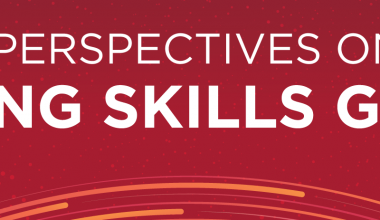
Until recent events, providing your employees with opportunities in the form of projects, stretch assignments and new roles was good for them and your organization.
Now, it’s critical. With entire industries grinding to a halt and people moving quickly between business areas, we’re experiencing major internal mobility efforts. Toronto-based TD Bank, for example, saw 2,000 workers shift into new customer support roles to help with an influx of queries about financial relief and deferrals.
The Benefits of Boosting Internal Mobility
Internal mobility pays off by giving workers the opportunity to learn and grow, which boosts their morale and, therefore, your employee retention. People who have developed a thorough knowledge of your business will stay longer and make more — and more valuable — contributions.
But there’s a missing part to this equation. To increase internal mobility, organizations need to continuously offer work opportunities and develop their people.
Surfacing Relevant Opportunities
You can connect employees to new opportunities through a dynamic career marketplace. Often an online resource, an internal talent marketplace is populated with all the open positions, projects and stretch assignments at your company. This platform makes internal opportunities more visible to existing workers, at a time when only 27% of active job seekers find it easy to find opportunities within their current organization.
The key is to identify each of these opportunities by the skills it requires — which is where upskilling comes in.
Upskilling to Improve Internal Mobility
Internal mobility and upskilling go hand in hand. Investing in upskilling aligns the skills of your employees with your evolving business strategy, which is critical to staying competitive. Companies that invest in advanced upskilling strategies create a more vibrant culture, improve employee engagement, and do a better job attracting and retaining talent, according to Degreed’s 2019 report “How the Workforce Learns.” Most importantly, they accelerate digital transformation, innovate quickly and react swiftly to new market opportunities.
Translating It Into Action
To make a career marketplace dynamic, it’s important to continually develop employees so they can take on challenge after challenge. But it’s easy to talk about upskilling. The real challenge comes when you try to put your words into action.
You can break down the process of putting an advanced, people-focused upskilling strategy in place into seven steps:
1. Identify Future Skills
Identify the critical capabilities your workers will need (per business area) in the next one to three years. It’s important to focus on just a few skills so that employees don’t feel overwhelmed by the task at hand. Plus, no one can accurately predict which roles or skills organizations will need by the end of the decade.
2. Assess Current Skills
Assess employees’ current skills for an accurate starting point. That way, both you and your employees will know where they’re starting from and can measure progress as they build new skills.
3. Set Upskilling Goals
Focus initially on filling existing and predicted skill gaps within your organization. For example, you might have an organizational goal for 25% of your leaders to build empathy skills or that 50% of your sales team build their skills in solution selling.
4. Map Learning to Skills
Determine the best learning methods for your organization, whether they’re online, team-based, peer-to-peer or on-the-job training — or a combination of these methods. Look at individual preferences, too; people learn best using a variety of methods, including digital content pathways, virtual team-based projects, peer coaching and on-the-job stretch assignments. Success is more assured when it’s driven from the bottom up as well as from the top down.
5. Measure Progress
Create a dashboard to continually track progress and make your skills data more actionable. By displaying this data in an easy-to-understand way, you make it more likely that employees, managers and senior leaders will use the data in their decision-making.
6. Match Skills to Opportunities
Connect employees with new projects, stretch assignments or jobs through a dynamic career marketplace. This platform gives them a clear reason to learn: to take the next step in their career journey.
7. Communicate Metrics of Success
Report results that are important to senior leaders and particularly relevant to your business priorities to gain additional buy-in for your upskilling plans. Track skill progression as well as what employees can do with their new skills. According to PwC, 74% of chief executive officers are “concerned about the availability of key skills” in their business, so show your C-suite that employees are learning and continuously building new skills, indicating that they are set up for success.
A Continuous Process
Effective upskilling is a continuous process that can not only increase internal mobility but also boost employee engagement and help you achieve your business goals. As your organization evolves, your strategies and business models will change and will require a new set of workforce skills and more mobility opportunities. Repeat these seven steps to continuously upskill your workforce for the future.







